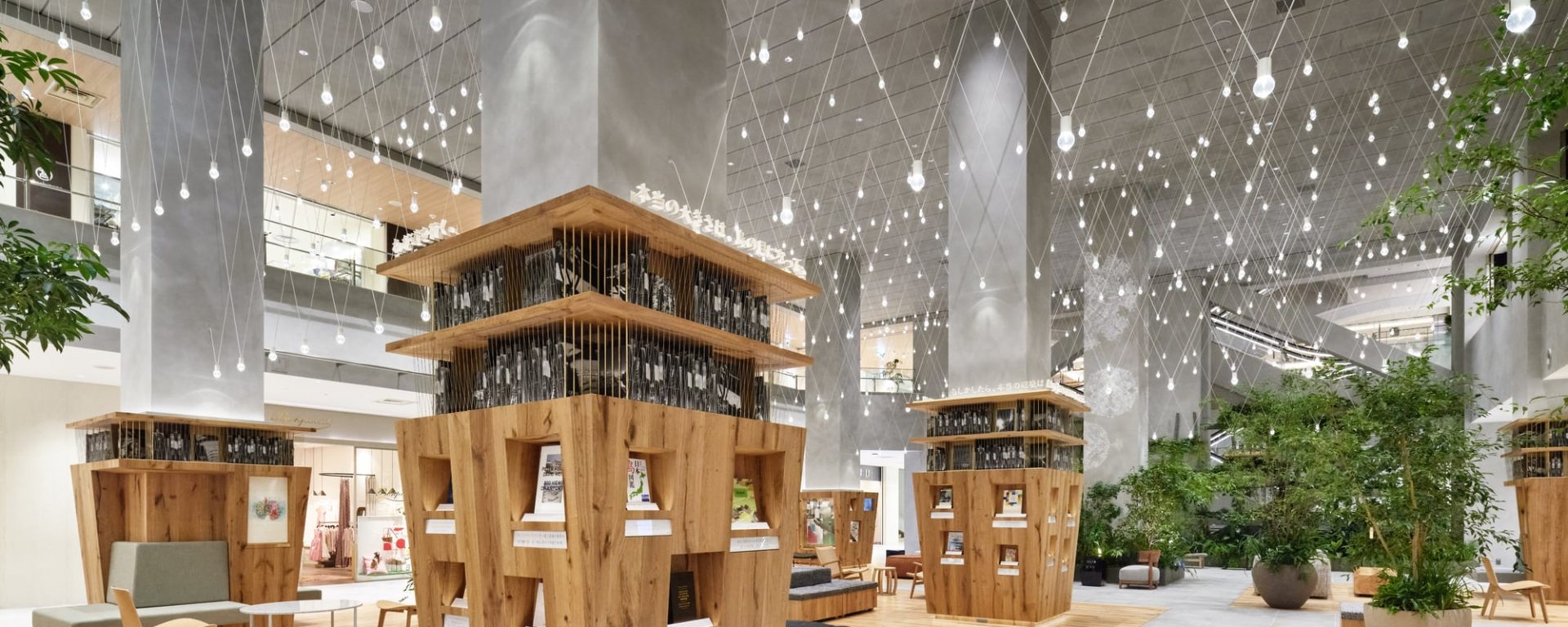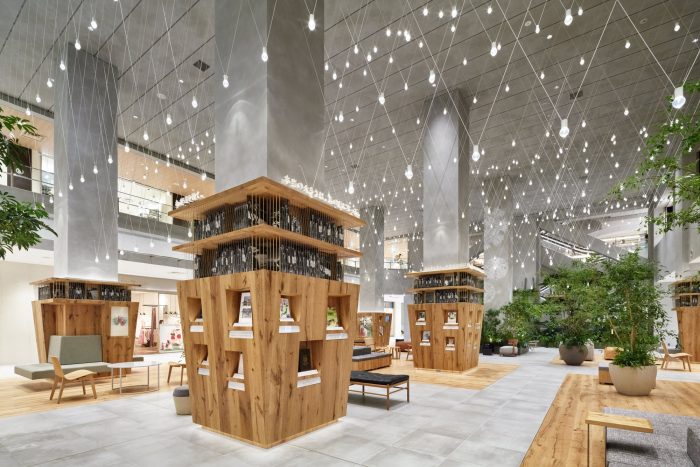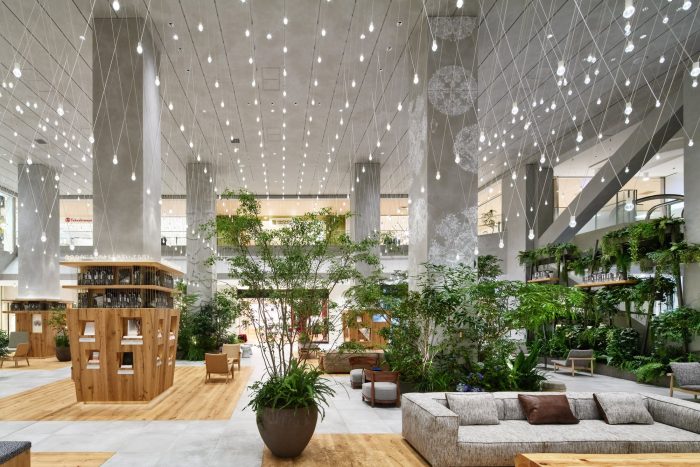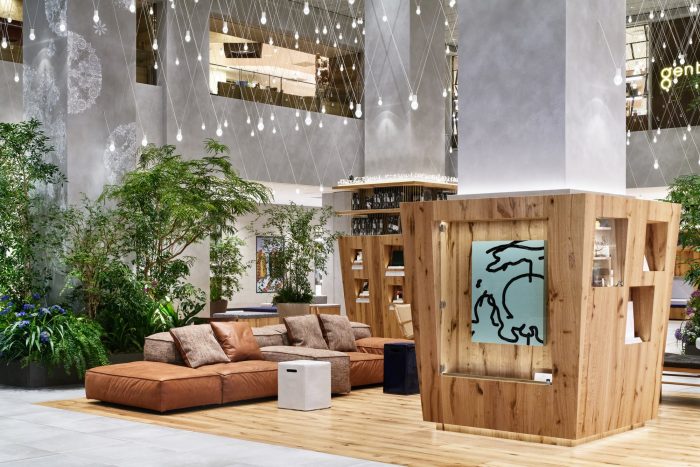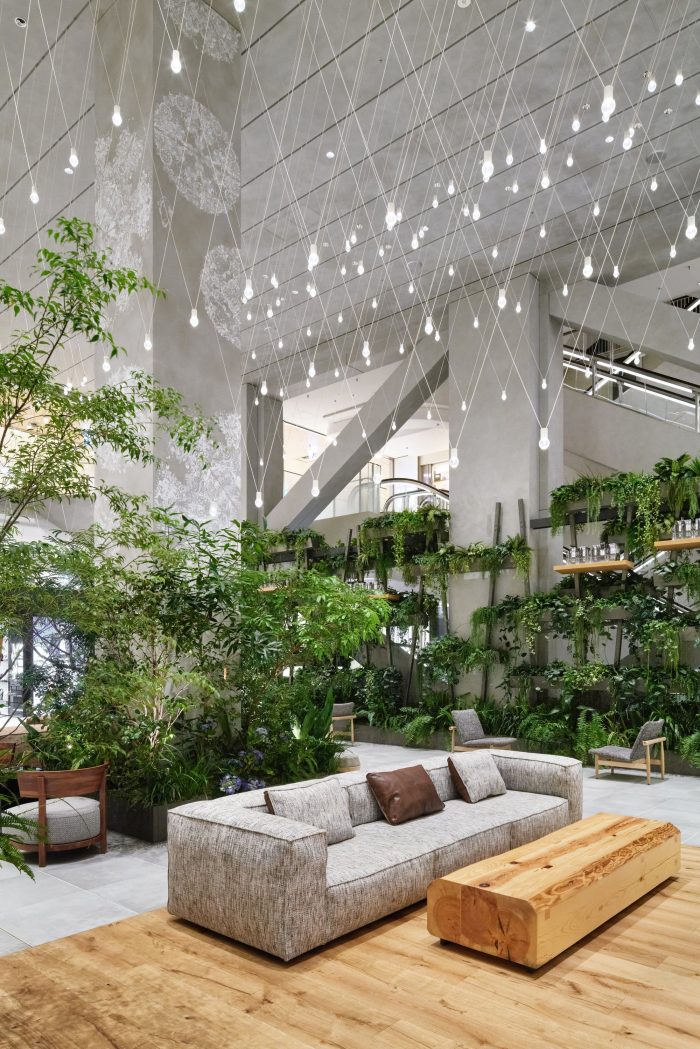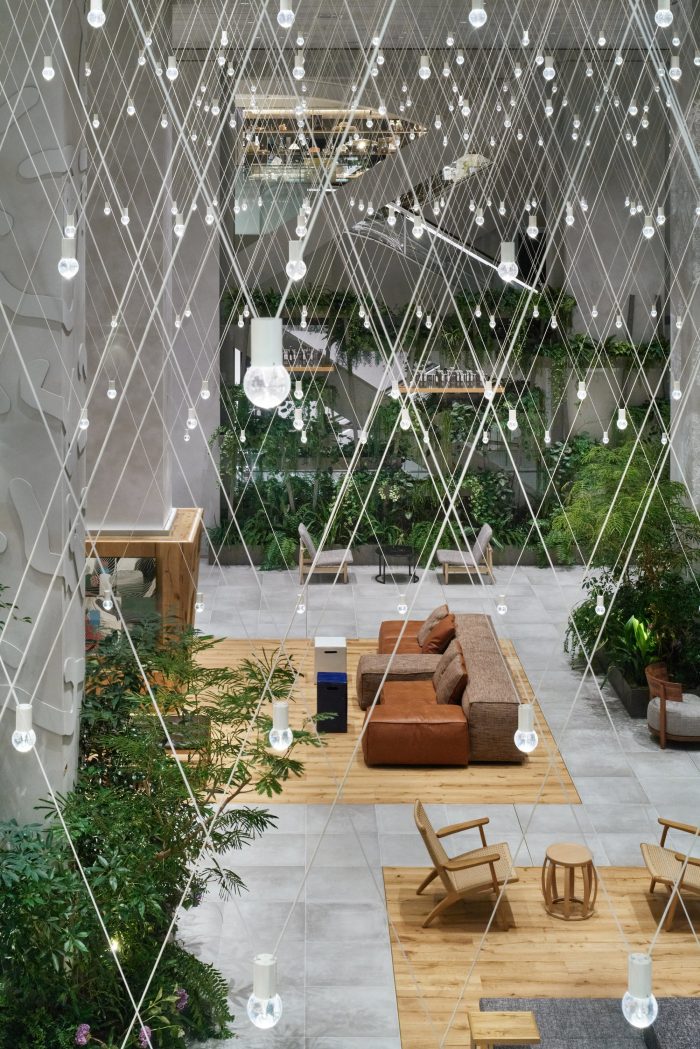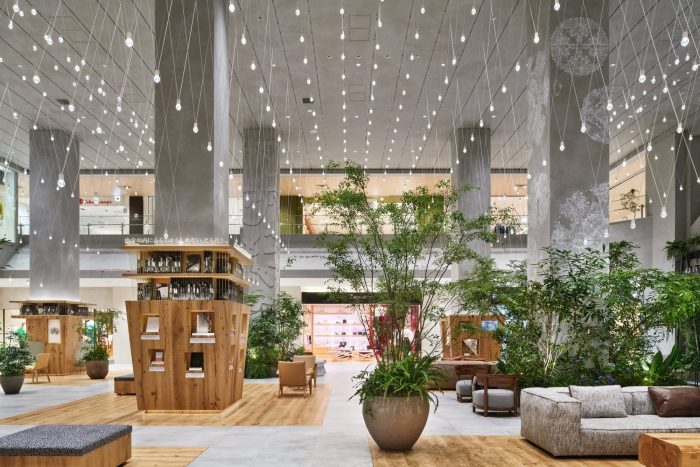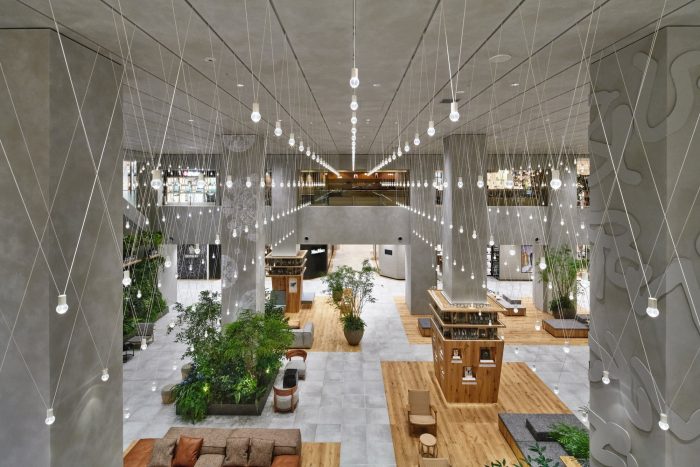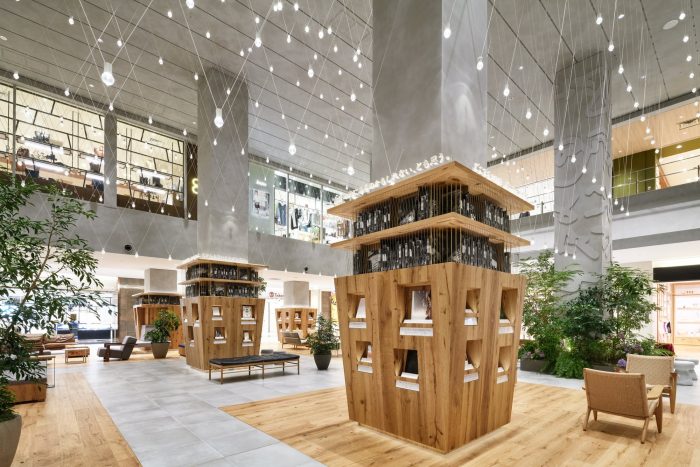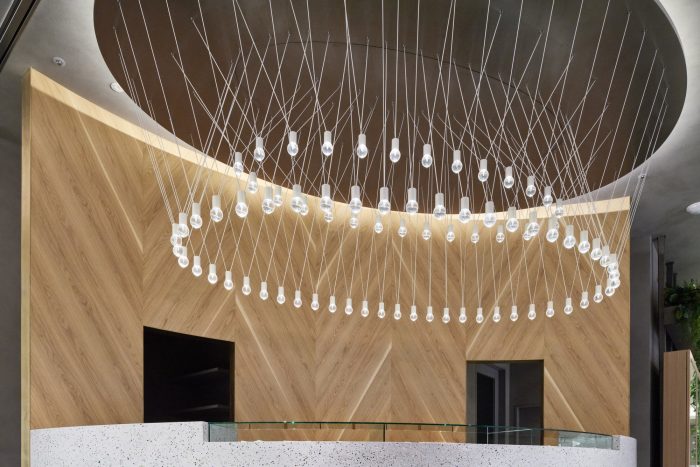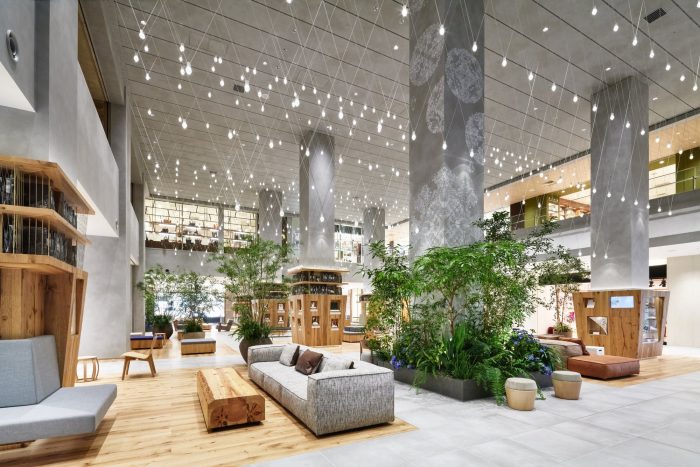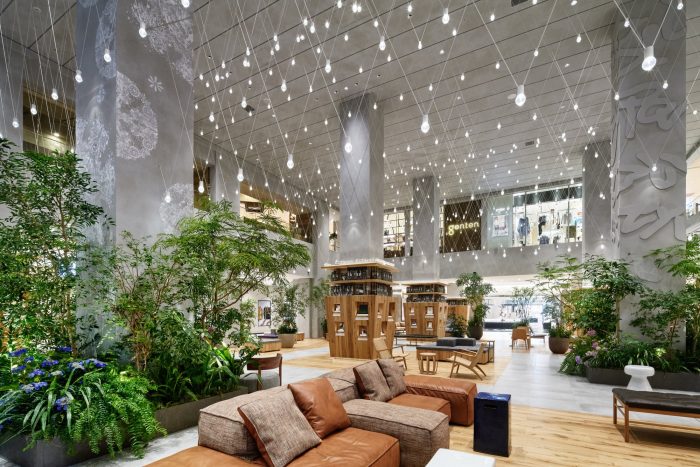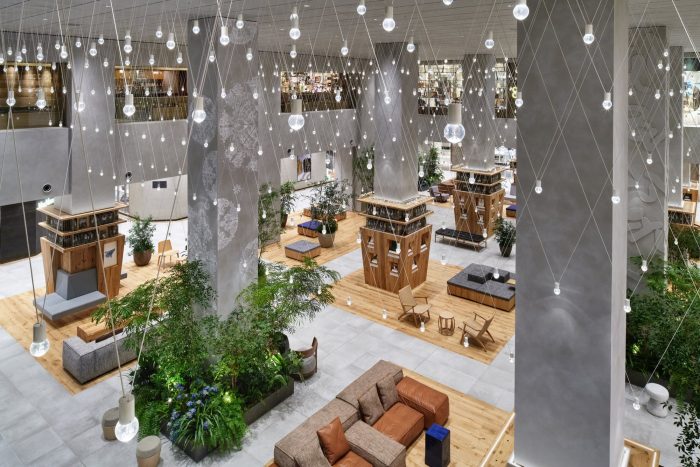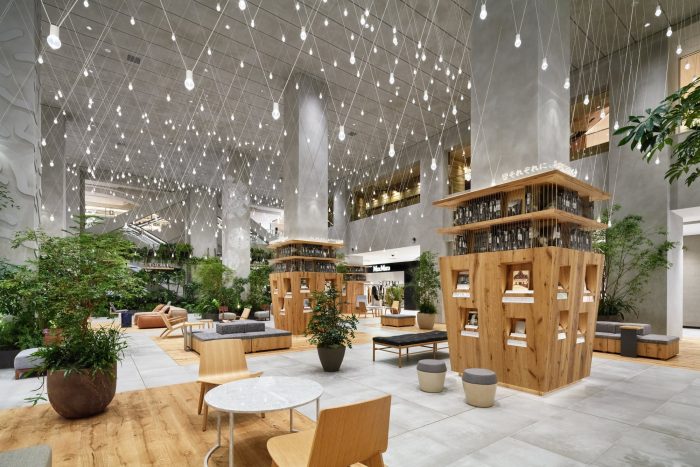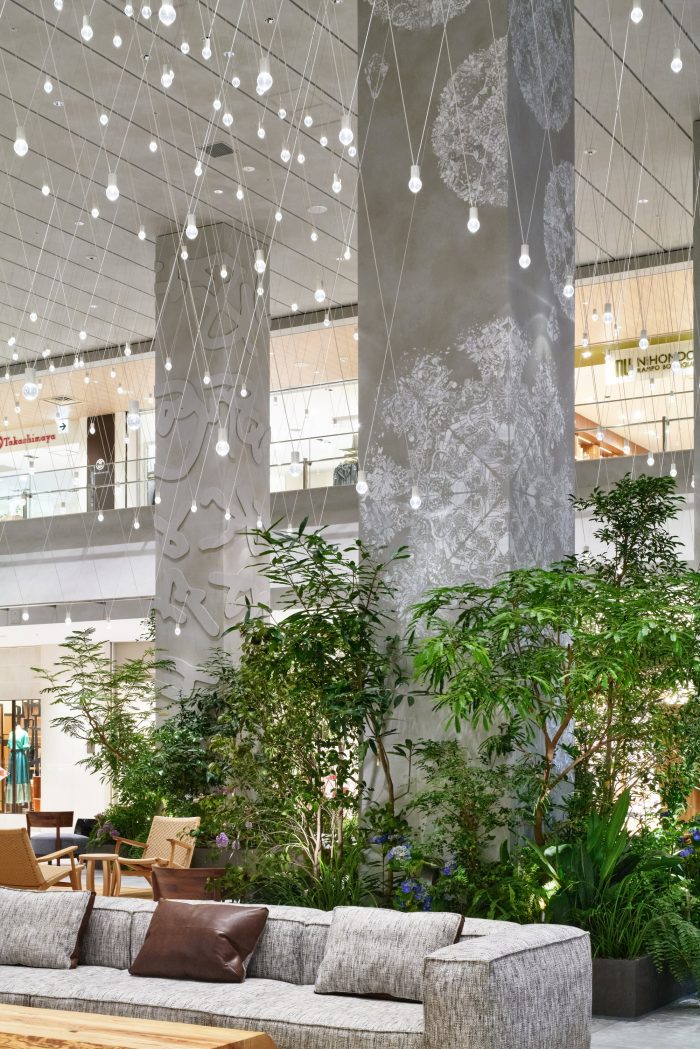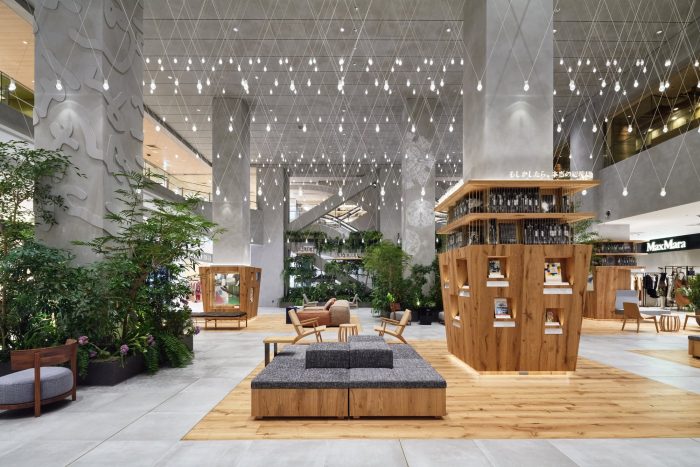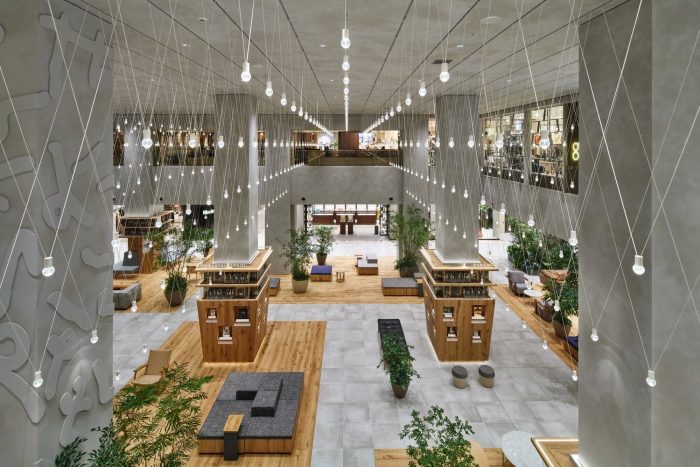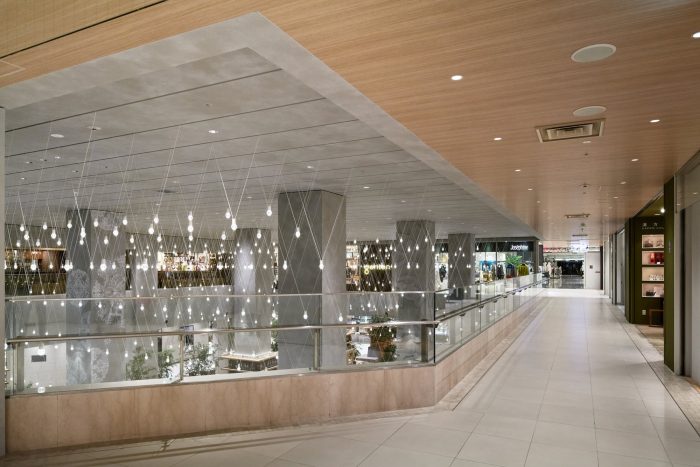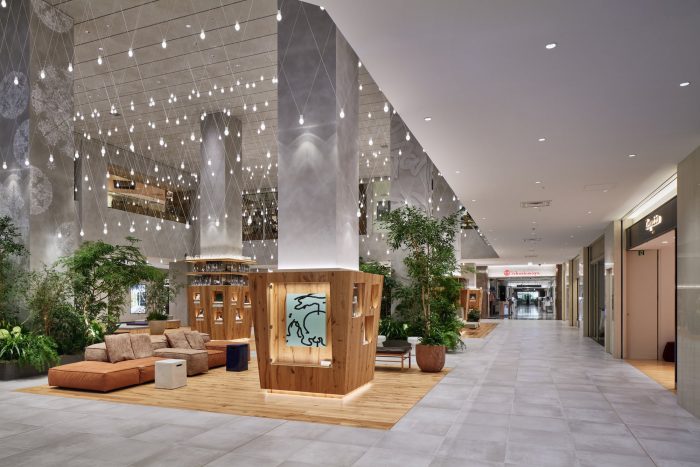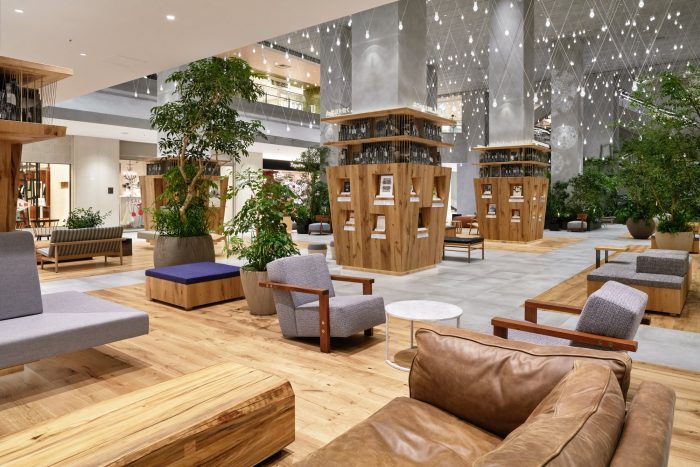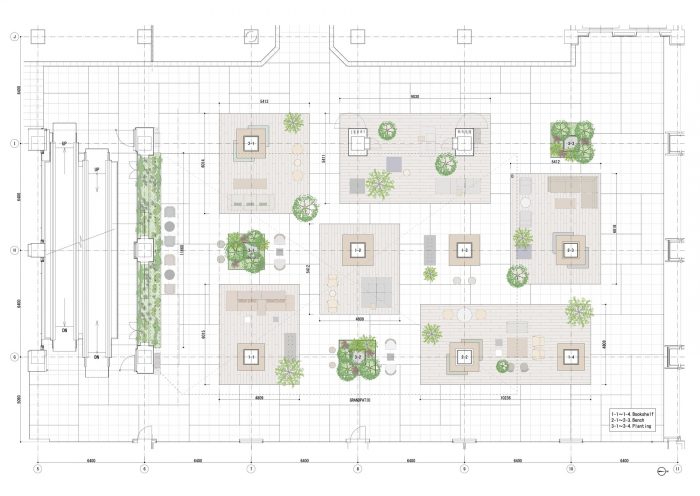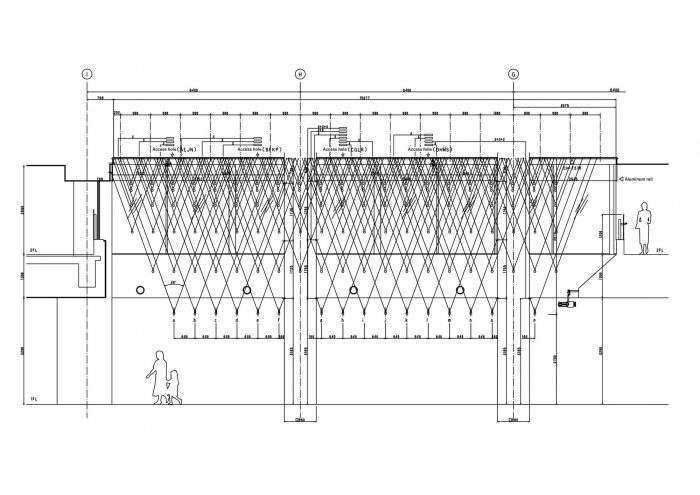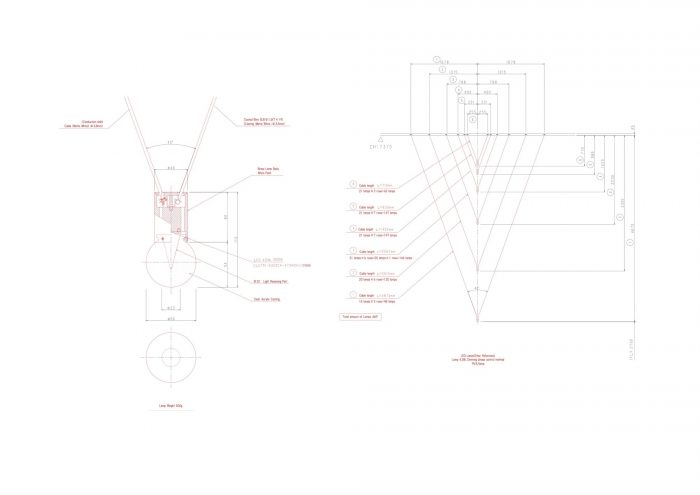在 “图书馆与艺术 “的设计理念指导下,这座拥有50年历史的商业建筑的改造为社区成员提供了一个休息和放松的场所。我们的设计将宽敞的中庭转变为一个亲密的飞地,有些地方像公园,有些地方像私人图书馆,为游客提供了接触书籍和艺术的机会。三个主要元素构成了这个空间:灯光的组合、接触故事的书架和公园般的绿色植物。由669个灯泡和1338根电线组成的灯光组合是该项目最独特的特征。通过改变悬挂灯泡的高度,我们在柱子之间建造了四个天花板拱顶。灯泡像项链吊坠一样悬挂在两根细绳上,以40度角的收敛角度悬挂。
Guided by a design concept of “Library & Art,” this renovation of a commercial building with a fifty-year history provides a place for community members to rest and relax. Our design transforms the spacious atrium into an intimate enclave that resembles a park in some places and a private library in others, offering opportunities for visitors to encounter books and art. Three primary elements compose the space: an assemblage of lights, shelves for encountering stories, and parklike greenery. Comprised of 669 bulbs and 1338 cords, the assemblage of lights is the most distinctive feature of the project. By varying the height of the suspended bulbs, we constructed four ceiling vaults between the columns. Bulbs are suspended like necklace pendants from two thin cords hung at convergent 40-degree angles.
白线重叠在一起,在头顶上形成一个由悬挂的灯泡照亮的云层。我们进行了重量计算并做了模拟,以确定防止最长的绳索(5米)松弛所需的重量。灯泡是由雕刻的亚克力而不是玻璃制成的,以确保它们被敲击时的安全。在用于悬挂每个灯泡的两条绳索中,在没有电线的那条绳索中插入了不锈钢丝,作为防止灯泡掉落的额外安全措施。为了防止雕刻的亚克力腔体因其内部反射的光线而显得过于耀眼,我们试验了不同的形式,以避免额外的扭曲反射光线。
The white lines overlap to form a nimbus overhead that is illuminated by the suspended bulbs. We performed weight calculations and made mockups to determine the weight necessary to prevent the longest cords, measuring 5 meters, from slackening. The bulbs are made of carved acrylic rather than glass, ensuring safety if they are ever knocked. Of the two cords used to hang each bulb, stainless steel wire was inserted in the one without electrical wiring as an additional safety measure to prevent bulbs from falling. To prevent the carved acrylic cavities from shining too brightly from the light reflected inside of them, we experimented with different forms to avoid additional distorted reflected light.
我们创造亲密气氛的第二个策略是通过安排新书使它们的封面清晰可见,将参观者与新书联系起来。书籍主管还选择了有意义的名言,展示在每本书下面。有一个书架专门用于展示艺术,对艺术家来说很重要的书籍和工具让参观者看到了创作过程的幕后花絮。中庭的两根柱子上装饰着艺术家的壁画,让人联想到阅读的体验。二楼咖啡馆的其他书架上有100本关于面包和咖啡的书籍。
Our second strategy for creating an intimate atmosphere was to connect visitors with new books by arranging them so their covers are visible. The book director also selected meaningful quotes to display under each book. One shelf is devoted to art, with books and tools that were important to artists giving visitors a behind-the-scenes look at the creative process. Two of the columns in the atrium are decorated with artists’ murals evocative of the experience of reading. Additional bookshelves in the second-floor café hold 100 books about bread and coffee.
第三个元素,公园般的绿化,是通过参考该区作为东京人的度假区的历史的花盆实现的。日本本土植物的选择灵感来自于著名的森林度假胜地,如轻井泽和Todoroki Ravine,城市居民在那里躲避夏季的高温。一些花盆包括季节性种植的空间,将四季的景色带入室内。商业设施正越来越多地寻求反映联合国可持续发展目标的设计。考虑到这一点,我们广泛使用了可持续材料,如室内装饰和家具的废旧木材。自开业以来,该空间吸引了许多游客,他们花时间放松并欣赏艺术和书籍。
The third element, parklike greenery, is achieved through planters that reference the district’s history as a resort area for Tokyoites. The selection of native Japanese plants was inspired by famous wooded resorts such as Karuizawa and Todoroki Ravine, where city dwellers went to escape the summer heat. Some planters include space for seasonal plantings, bringing the four seasons inside. Commercial facilities are increasingly seeking out designs that reflect the UN Sustainable Development Goals. With that in mind, we made extensive use of sustainable materials such as scrap wood for the interior finishes and furnishing. Since its opening, the space has drawn many visitors who spend time relaxing and enjoying the art and books.
Architects: Yuko Nagayama & Associates
Area : 2058 m²
Year : 2020
Photographs :Daici Ano
Interior Design : Yuko Nagayama and Associates
Greenery Designer : Daishizen Inc., Taichi Saito, Akira Masuda, Miyu Yoshizawa
Lighting Designer : Izumi Okayasu Lighting Design Office, Izumi Okayasu
Contractor : Tokyu renewal Co.,Ltd, Kosuke hirokoshi, Yoshiyuki Yasuhara, Yuji Otsuka, Yasuhiko Eto
Client : Toshin Development Co.,Ltd (Takahiro Minamikawa)
Design Development : Nihon Sekkei, Inc., Takao Yuki, Masayuki Hamachi, Yoshifumi Karasawa
Art Curation : Sakie Takasu
City : Setagaya City
Country : Japan

